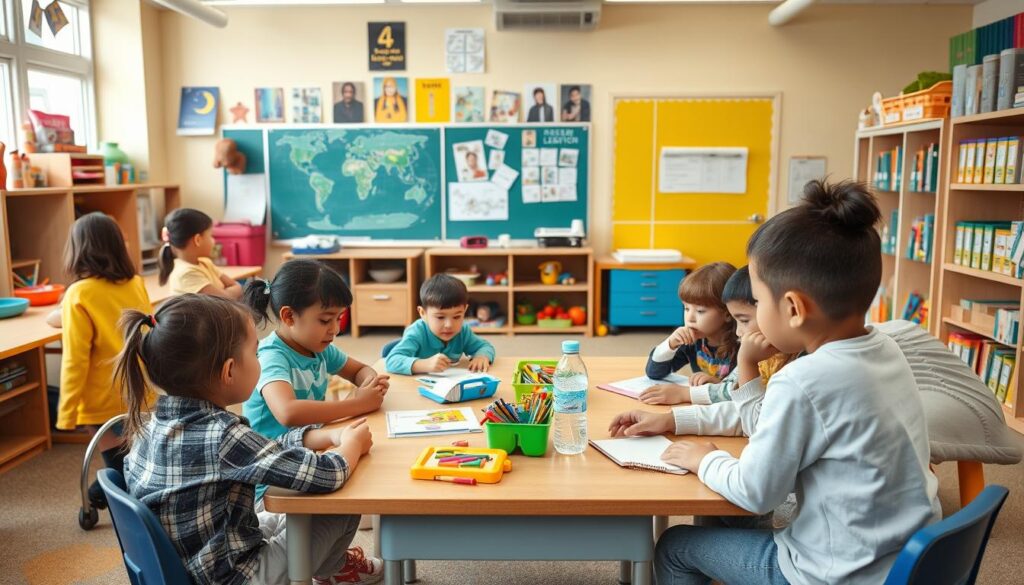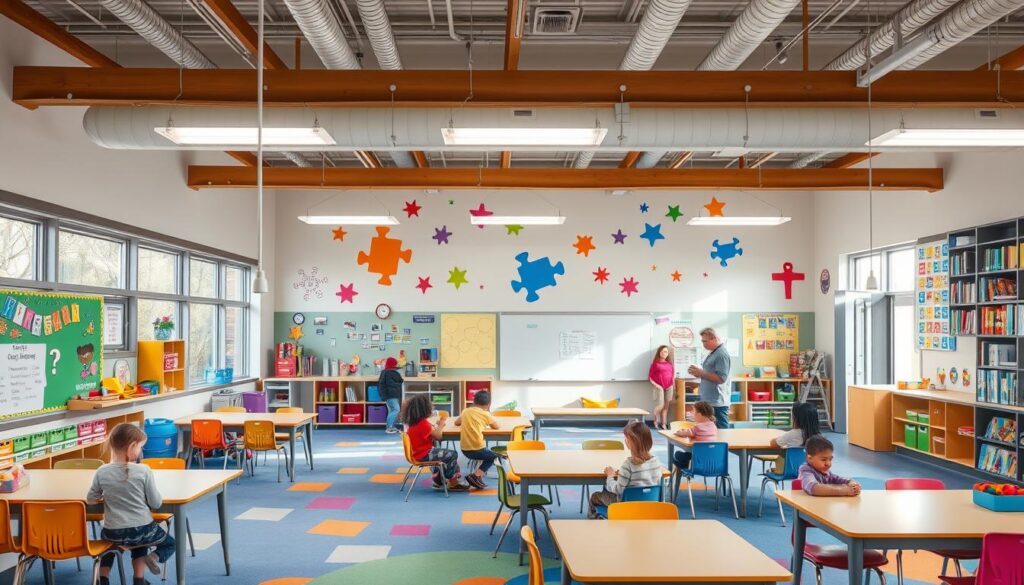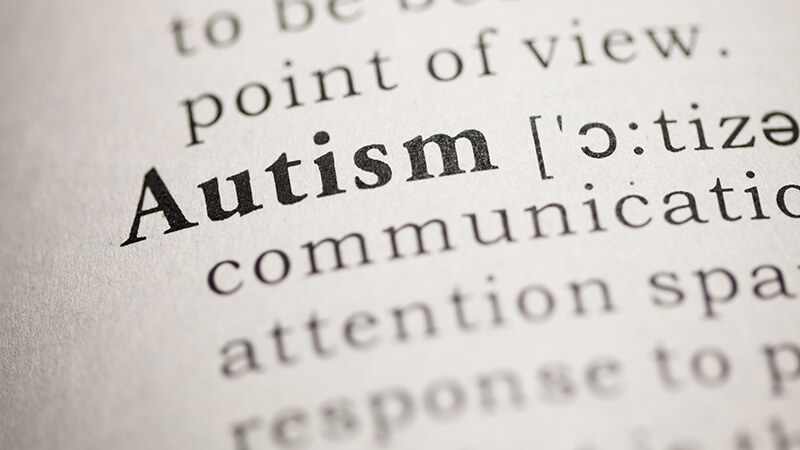Did you know places like Land Park Academy in Sacramento cater to individuals with autism from ages 3 to 22? They’re one of many focusing on nurturing each child’s growth and potential. Schools like The Autism Academy of Learning in Toledo, Ohio offer year-round programs. Then, there’s Heartspring School in Wichita, Kansas, which takes a multi-disciplinary approach. This shows how varied your options for autism education are, matching your child’s unique needs.
Choosing the right autism school is crucial for your child’s academic and social growth. Since 1980, organizations like Judi Robinovitz Associates Educational Consulting have helped families find the best match. Selecting a school specialized in autism means your child benefits from evidence-based practices and a curriculum that meets their needs. It also means they’re in a place that champions emotional support.
However, be cautious when picking an autism program. Avoid red flags like overstated success stories or celebrity endorsements. They can be misleading. It’s essential to make sure your child gets the right support. Tools like an IEP or a 504 plan, as required by the IDEA, can set the foundation for their success. They also boost their confidence throughout their learning journey.
Key Takeaways
- Seek schools offering individualized and evidence-based autism programs that resonate with your child’s unique needs.
- Understand the importance of specialized educators and multidisciplinary teams in fostering your child’s development.
- Evaluate the school’s approach to sensory sensitivities, social integration, and the prevention of bullying.
- Be observant of misleading indicators in autism programs that might harm more than help.
- Remember the significance of IEPs and 504 plans in ensuring the educational rights and needs of children with autism are met.
- Consider a diverse array of educational settings, from inclusive classrooms to autistic-only environments, to best support your child.
Understanding Autism Spectrum Disorder in Educational Settings
Autism Spectrum Disorder (ASD) affects how people connect with the world. It presents various challenges in educational spaces. The impact ranges from mild to severe, touching on communication and how individuals socialize. Autism-focused schools are key for creating a learning space for everyone.
Such schools, known as autism spectrum disorder schools, work to meet unique student needs. They deal with things like sensitivity to light and sound, and struggle with unexpected changes. The goal is to enhance learning and social skills with specific supports.
- Visual aids and structured environments match the learning styles of students with autism.
- Behavioral techniques and communication training tackle repetitive behaviors and communication challenges.
- Programs for social skills and sensory support help improve social interaction and handle sensory overloads.
Statistics show the need for specialized schools, with one in 36 U.S. children diagnosed with autism. Such schools employ techniques like priming and adjustments to the curriculum. This personalizes learning to fit each student’s needs. Access to educators trained in autism is crucial for crafting effective individualized education programs (IEPs).
It’s vital for staff in autism schools to understand ASD deeply. Programs like the Master of Special Education at Concordia University, Nebraska, prepare educators. This improves the quality of education for students with autism.
In summary, schools for autism offer crucial educational and behavioral support. With specialized training and environments, they make the educational journey rewarding for students with autism.
The Importance of a Tailored Educational Plan
Children on the autism spectrum need tailored educational plans in special education schools. These plans are crucial for creating a good learning environment. They cover the academic, social, and emotional needs of each student. This is what makes them so important.
These autism education programs recognize the importance of structure and predictability. Strategies like visual aids and multi-sensory learning are key. They help with understanding and make changing classes smoother.
- Visual aids help clarify expectations and routines, making daily tasks more manageable for students with autism.
- Multi-sensory teaching methodologies engage different senses to aid learning, accommodating diverse learning styles and needs.
- Structured routines are established to provide a reassuring consistency that helps reduce anxiety and behavioral issues.
In these programs, classes have more adults to ensure every student gets attention. Teachers, parents, and specialists work together. They aim for clear, achievable goals in the student’s education.
Autism education programs in special education schools also focus on life after school. They teach job and life skills. This prepares students for independence and confidence in adulthood.
The success of these educational approaches is in their customization. Every part of the IEP is made just for the student. It includes special teaching methods and supports based on the student’s needs. It shows a deep understanding of what students with autism need to succeed.
Evaluating the Sensory and Social Demands of School Environments
Finding the right school for your child with autism means looking deeply into how it handles sensory and social needs. Schools with specialized services are key. They really help children with autism face their unique challenges.
Sensory Processing Challenges in Schools
Schools that help kids with autism get how tough sensory stuff can be for them. Things like bright lights, loud noises, and certain textures can be too much in regular schools. Special education schools reduce these sensory inputs. They make a better place for learning that suits each student’s needs. They do this knowing well that kids with autism experience the world differently than other kids. This difference affects how comfortable they are in typical schools.
Facilitating Social Integration and Preventing Bullying
It’s vital for students with autism to feel part of the group without facing bullying. Schools with good autism programs work hard to make everyone get along. They have special activities and plans to improve social skills. This helps not just with learning but also with making friends. Being a part of a friendly community is key for a happy school life.
Creating Emotionally Supportive Learning Spaces
The way students feel at school is super important. Special education schools strive to make a safe and understanding space. This kind of emotional support can change how well students do in school. Feeling less stressed lets them get more involved in learning. Studies show that the right environment really boosts the school performance of kids who are extra sensitive or less likely to avoid sensory stuff.
In conclusion, choosing a school for a child with autism means thinking about sensory needs, social life, and emotional support. These things are not just good for learning. They matter for the student’s happiness and growth. So, picking schools with the right support for autism is a big deal for parents and caregivers.
Personalized Support and Inclusive Education Opportunities
Choosing the right educational path is crucial for families. Knowing about personalized support and inclusive education matters. Schools dedicated to autism support and specialization provide strong setups. These setups meet the varied needs of students on the autism spectrum. They include Individualized Education Plans (IEPs) and 504 Plans.
Navigating IEPs and 504 Plans
IEPs and 504 Plans offer essential support for students with disabilities. For autism, an IEP sets tailored educational goals. It considers the student’s needs, strengths, and challenges. A 504 Plan, however, focuses on ensuring that students with disabilities get the right accommodations. This helps them succeed academically without altering the curriculum.
- Schools like the Allan Cott School and The Horizons School in Alabama excel in creating customized IEPs. These IEPs help students progress developmentally and educationally.
- 504 Plans help make education accessible and reduce barriers. They ensure that students can engage fully with their peers.
Pros and Cons of Inclusion Settings
Inclusive education benefits all students by promoting social learning. Yet, its success varies based on each child’s needs and the support provided.
- Pros: Inclusion builds social skills through peer interaction. It prepares students for a diverse society.
- Cons: Children with severe autism might struggle in inclusive settings without proper support. They might not connect well with the curriculum.

Many aim to find a balance between support and independence. Programs like Emory University’s Emory Oaks and the University of Florida’s SOCIAL Gators are great examples. They focus on academic success, social integration, and independence. These programs showcase effective autism support within inclusive education.
Choosing Schools That Specialize in Autism
When picking the best schools for autism, it’s key to choose places that understand and meet the needs of students with autism spectrum disorder (ASD). With more schools for autism and special education popping up, picking the right one means looking at several important things.
- Personalized Education Plans: The top schools for autism stand out because they focus on what each student needs. They make sure every child gets the right help for learning and making friends.
- Trained Staff: Schools that focus on autism have staff who know the latest ways to help kids with ASD, like Applied Behavior Analysis (ABA). A team that knows what they’re doing can make school a great place to be.
- Sensory-Sensitive Environments: The best schools for autism have spaces that don’t overwhelm the senses. This can make students feel less stressed, helping them learn and play better.
- Social Skills Development: Good autism schools also teach students how to get along with others. This helps them handle social situations better.
- Family Involvement: The best special education schools also think it’s important for families to be part of the education. Working together helps students keep improving.
Finding the best autism school means looking at what they offer and if they fit your child’s needs. The right school makes a big difference in your child’s growth and happiness. It’s a big choice for any parent or guardian.
You can find great schools for autism in well-known places like California and Alabama or other states, too. The goal is to find the perfect place for each child with autism to do well in school and with friends.
Selecting the Right Program: Public, Private, and Specialized Schools
Choosing the right school for your child with autism is important. You need to understand the options, including public, private, and specialized programs. Each type has its own benefits and challenges.
Public Programs and Their Resources

Public schools offer many resources under the Individuals with Disabilities Education Act (IDEA). This act makes sure students learn in a good environment. Schools focused on autism create special plans, like IEPs, to help students. Public schools, being bigger, have more programs and activities. This can make school better for students with autism.
Private Schools: Weighing the Pros and Cons
Private schools for autism usually have smaller classes and give more attention to each student. But, they can be expensive, costing over $11,000 a year for elementary level. They might also have fewer spots available and a tough entry process.
Nationally Renowned Autism Education Programs
Specialized programs offer education made just for kids on the autism spectrum. They use the latest methods, like Applied Behavior Analysis (ABA). These schools are ready for different special needs. They don’t just teach academics. They also help kids develop life skills and social abilities. This is key for well-rounded growth.
In short, when picking an autism-focused school, think about what your child needs and what works for your family. Finding the right fit will help your child do well in school and in life.
Conclusion
Choosing the right education path for children with autism is crucial. In the U.S., more children are being diagnosed with Autism Spectrum Disorder (ASD). This highlights the need for special education strategies that meet their unique needs. So, it’s important to look at the best schools for autism and their comprehensive autism services for students.
A large number of kids with ASD can thrive in regular education settings with the right support. This shows how vital it is for schools to offer special education services. And, to let these students learn in general education classrooms as much as possible.
- Top schools for students with autism often feature specialized training for their staff, designed environments that reduce sensory overload, and curricula that enhance both academic and life skills.
- Effective autism services for students may include speech therapy, occupational therapy, social skills training, and behavioral therapy, each adapted to the individual’s needs.
When picking a school for your child with autism, think beyond academics. It’s about finding a place where your child can grow socially and emotionally too. The aim is to find a school that pushes your child academically while supporting their all-around growth.
The best school can change the lives of students with autism and their families for the better. It sets the stage for future success. It helps students gain skills to succeed not just in school but in life too.
How New Direction For Young Adults Can Help You
Choosing the right educational path for your child with autism can be tough. New Direction for Young Adults shines as a guiding light. Since its start on June 28th, 2006, it focuses on treating autism with unique services. They use Direction Therapy CMT, praised in many testimonials, even recent ones from June 6, 2023. These success stories show how much people trust and rely on them.
For young adults with autism, New Direction offers customized support. Traditional schools often don’t meet their needs. About 40 to 50 percent face unemployment after high school. New Direction’s programs aim to change that. They mix clinical treatment, education, and life skills development. This combination prepares students for academic success and independence in the real world. They emphasize using practical skills in daily life for true independence.
Moving from school to work is a big step for young adults with autism. New Direction provides a supportive living space that helps build independence. This is important as many are about to leave school services. With a 94% attendance rate, programs like New Direction prove their worth. Plus, partnerships with groups like California’s Department of Rehabilitation and UCLA’s PEERS for Careers show their commitment. They aim to lower unemployment rates by improving soft skills and finding good jobs for these young adults.



